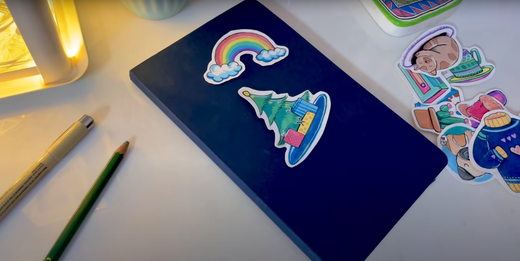

Removable Film Labels
Written by: Hao Li
|
|
Time to read 4 min
When deciding what paper to use for printing stickers, it's essential to consider the intended application and desired finish. For everyday use and indoor applications, matte or glossy adhesive paper is a popular choice. Matte paper provides a smooth, non-reflective surface, making it ideal for stickers that need to be easily readable without glare. Glossy paper, on the other hand, offers a shiny, reflective finish that enhances colors and makes designs pop, which is perfect for vibrant, eye-catching stickers. For more demanding applications, such as outdoor use or situations requiring high durability, vinyl paper is recommended. Vinyl is water-resistant, durable, and capable of withstanding exposure to the elements, making it suitable for bumper stickers, window decals, and other uses where the stickers might encounter moisture or rough handling. It's also important to match the paper type with your printer—ensure that you choose inkjet-compatible paper for inkjet printers and laser-compatible paper for laser printers to achieve the best results. By carefully selecting the appropriate paper type based on your specific needs and printer compatibility, you can produce high-quality, professional-looking stickers.
Table of Content
The paper you need for printing stickers depends on several factors, such as the printer you are using, the desired finish, and the sticker's intended use. For inkjet printers, look for inkjet-compatible sticker paper. Similarly, for laser printers, ensure you choose laser-compatible paper. If you want waterproof stickers, vinyl paper is the best option. Always check the printer's specifications and the paper's compatibility to ensure optimal results.
The best paper size for stickers depends on your project requirements. Common sizes include A4 (8.27 x 11.69 inches) and letter size (8.5 x 11 inches), which are versatile and widely used for printing multiple stickers on a single sheet. For smaller stickers, consider using A5 (5.83 x 8.27 inches) or custom sizes that match your specific design dimensions. If you plan to create larger stickers, you might opt for larger sheets or rolls, especially if using a wide-format printer.
Can you put sticker paper in any printer?
What type of printer can print on sticker paper?
What is the difference between printable vinyl and sticker paper?
The type of sticker paper you choose depends on the application:
To achieve vivid colors and sharp images in your printed stickers, follow these tips:
To prevent smudging or fading, consider the following:
Yes, you can print custom shapes and sizes for your stickers. Here’s how:

24/7 support team

Multiple Payment Methods

Worry-free shopping

Delivery in 3-7 business days
Be the first to know about label discounts,
product launches, and time-saving tips — subscribe now!
Are you 18 years old or older?
Sorry, the content of this store can't be seen by a younger audience. Come back when you're older.
They are exactly what I need, very easy to use!!!
Everithing was really good, fast delivery, product quality 100% guarantee
Very versatile label for mailing addresses and a marketing to promote a product or get someone’s attention.
Brother DK-2205 Compatible Continuous Labels 2.4" x 100'
Great little labels to use in pricing jewelry. Saves a lot time when you use with a thermal printer. I use on the hang tags and other display cards. Will definitely reorder in the future.
The label is perfect it's very recommended to everyone
iLabel 4x6 Thermal Shipping Label Printer Bluetooth Wireless
Dymo 30256 Removable Film Waterproof Shipping Labels 2-5/16” x 4”





